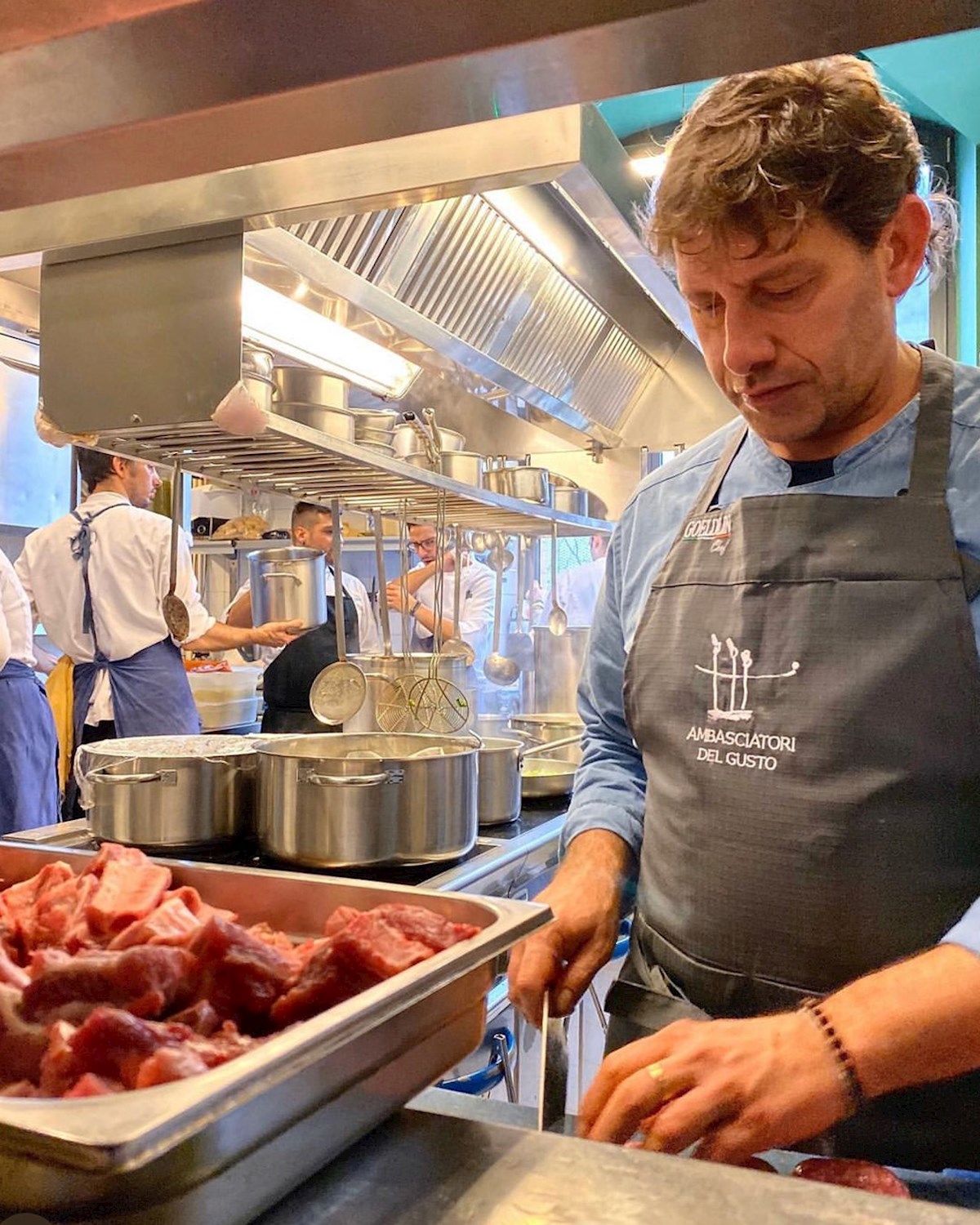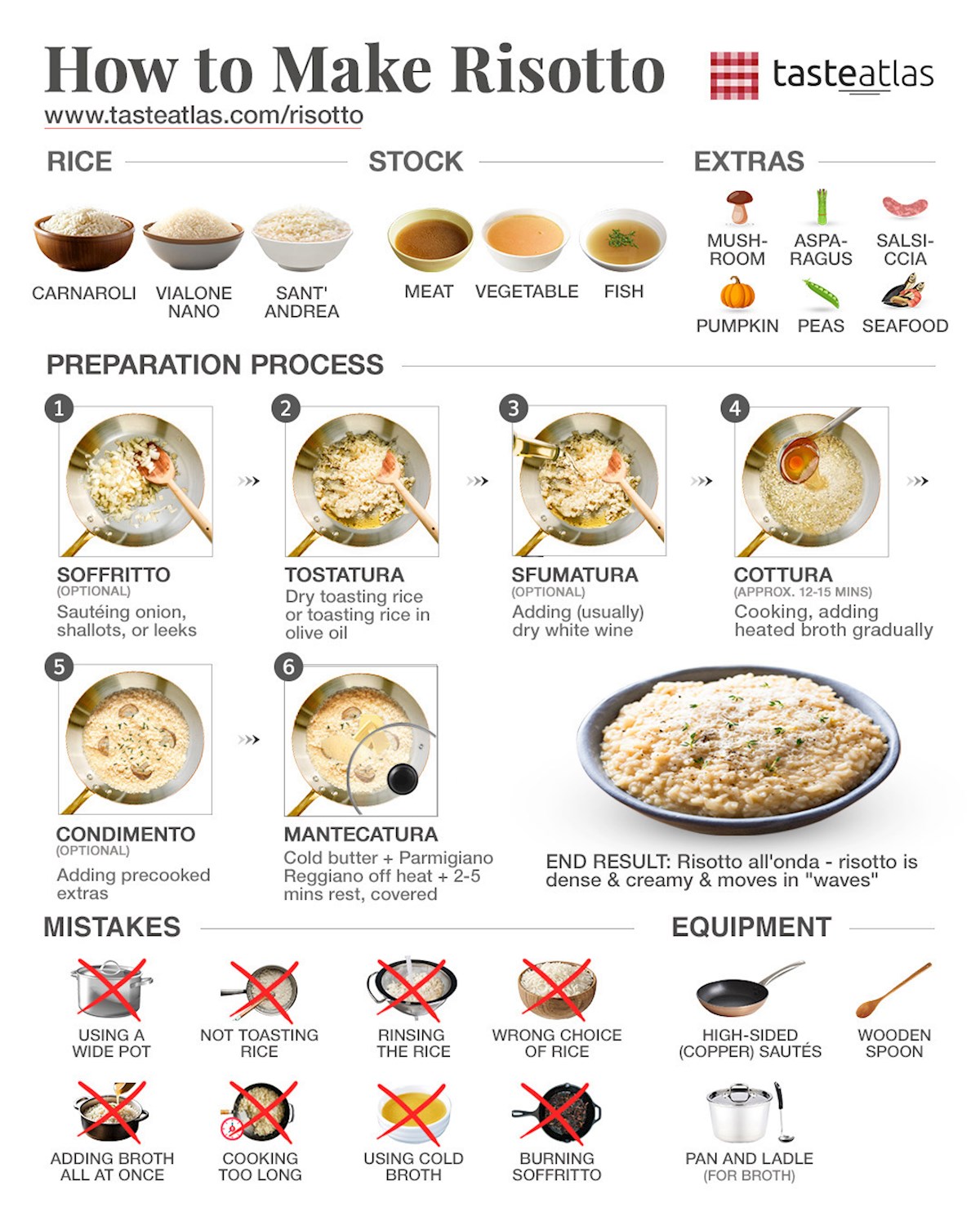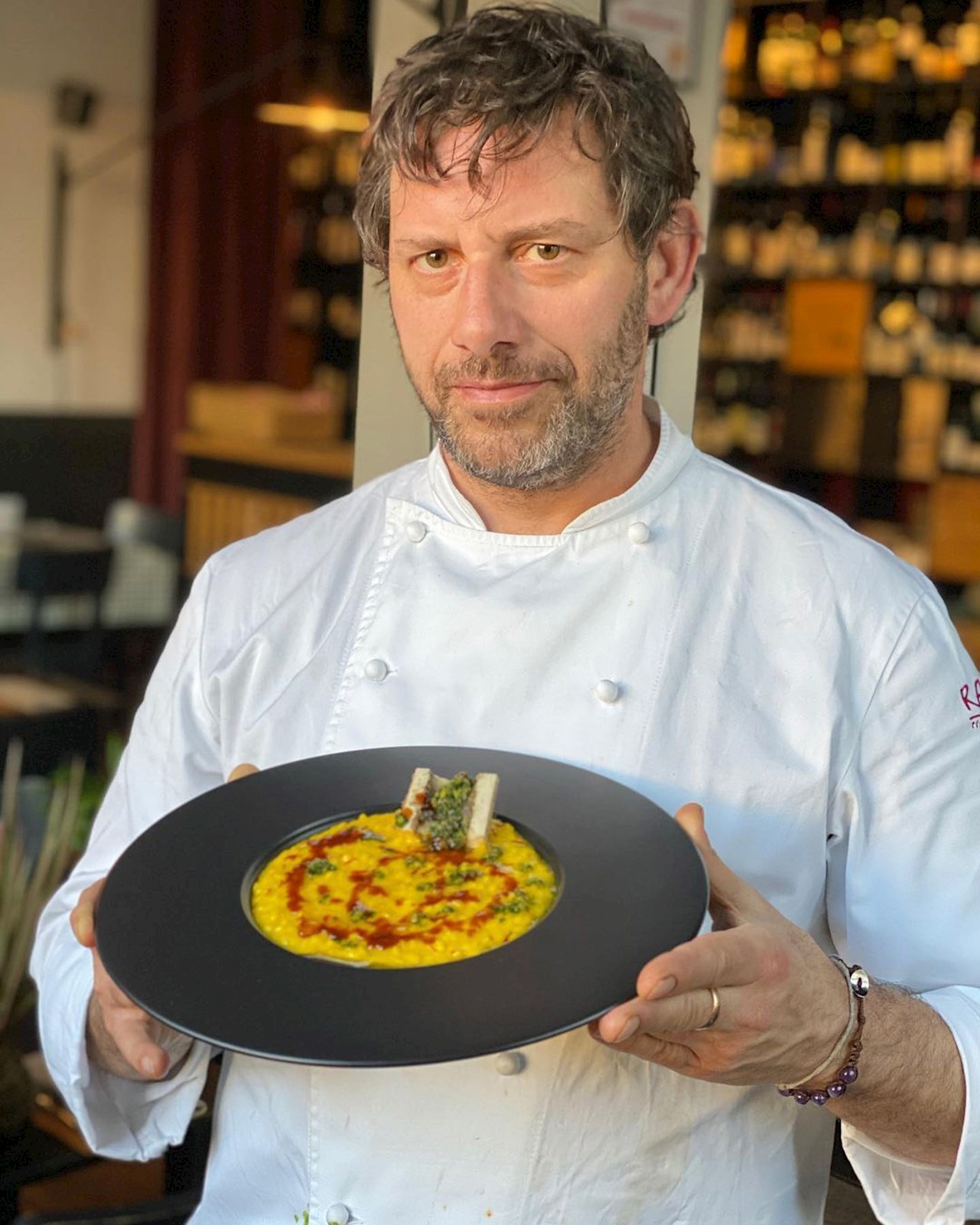Risotto alla Milanese is one of the most iconic dishes in Italian cuisine, renowned for its distinctive yellow color derived from the precious saffron. This delicious specialty has ancient origins and perfectly exemplifies the rich culinary tradition of Milan. Prepared with rice, beef broth, butter, bone marrow, and saffron, risotto alla Milanese is a creamy and flavorful dish that has captivated taste buds around the world.
One of the most celebrated and the most iconic destinations for risotto lovers is Ratanà, located in Milan's Isola district.
Cesare Battisti, the owner and head chef of Ratanà, has earned a reputation for his dedication to preserving traditional flavors while incorporating modern techniques.
To delve deeper into his culinary expertise, we approached Cesare Battisti and asked him to reveal the secrets behind his renowned risotto. With his extensive experience and passion for Milanese cuisine, Battisti shared invaluable insights into the preparation, ingredients, and techniques that make his risotto unparalleled.
 Credits: Ristorante Ratanà
Credits: Ristorante Ratanà
What, in your opinion, makes a dish truly a “risotto”?
To make an authentic risotto, you undoubtedly need high-quality, starchy rice such as carnaroli (this variety contains more than 20% starch in the grain, which makes the rice creamier) or vialone nano and, above all, a great deal of patience: you must add the stock one ladle at a time and not all at once. Finally, you need the right mantecatura at the end.
What is your recipe for a proper risotto?
Heat extra virgin olive oil in a saucepan. Add half a whole onion and let it wilt over low heat until cooked. Remove it, add the rice and toast it until translucent.
At this point, start cooking by adding the filtered broth (vegetable, meat or fish depending on the recipe) a little at a time. Continue cooking by simmering the risotto and stirring it slowly.
After 14 minutes of cooking the rice, turn off the heat and mantecare with the cheese and cold butter from the fridge. Allow to rest for 2 minutes, after which serve.
 Risotto Credits: Ristorante Ratanà
Risotto Credits: Ristorante Ratanà
How important is the stock quality in a risotto, and do you have any personal recommendations for making it?
The quality of the stock is crucial. Each type of rice needs a different stock: vegetable, meat, fish. The recommendation is that regardless of the type, every recipe for making stock must start with cold water.
Is there a specific type of pan or pot you’d recommend for the perfect risotto?
It is important not to make risotto in high pots, but we always recommend using high-sided sautés.
What are the “secrets” to a great risotto? Can you share any lesser-known techniques or ingredients that can elevate a basic risotto?
One of the secrets to a successful risotto, as mentioned earlier, is to add the stock a little at a time. Only once it has been absorbed should you add more. Once cooked, the heat should be turned off and the risotto should be mantecato with the flame off. Unlike pasta, which should be served very hot, it is preferable to serve risotto at a temperature of around 50°C.
 Credits: Ristorante Ratanà
Credits: Ristorante Ratanà
What are the most common mistakes people make, or what should they pay most attention to?
The most common mistake is to put the stock in all at once with the only result being boiled rice. More attention should be paid to the cooking time of the rice: always remember that carnaroli should not be cooked for more than 12/14 minutes.
With the many regional and flavor variations of risotto in Italy, which one is your personal favorite and why?
There are thousands of risottos in Italy, so it is difficult to choose a favorite type. Let's say that most people's favorites tend to be those with seasonal vegetables. My favorite is with spinach: it has a very distinct vegetable flavor, and we serve it combined with fresh spinach on top which gives it crunchiness.
 Risotto Types
Risotto Types
Check out the best risotto varieties in the world here.
Are there any unconventional ingredients you’ve tried and loved in risotto? Are there “healthier” versions of risotto that you’ve experimented with or would recommend?
We tried replacing the broth with fruit and vegetable centrifuges. The result is surprising. Besides being healthy they also taste very good. I especially recommend trying carrot and orange.
What are your favorite wines or beverages to pair with risotto?
It is difficult to choose a specific type of wine that would go well with each type of risotto: pairings vary greatly depending on which flavours the risotto has. With our speciality, risotto alla Milanese, we recommend the Pinot meunier Rio Cami di Casa Caterina or a Franciacorta.
What’s your favorite rice dish outside of Italy?
Outside Italy I love to eat fish paella because it is very reminiscent of an Italian risotto, plus it has the advantage of being crispy, being baked.

View the TasteAtlas recipe for the authentic Risotto alla Milanese here.



